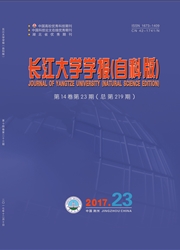

 中文摘要:
中文摘要:
地震信号的低频成分包含了与储层流体流度有关的信息,本文在含流体孔隙弹性介质依赖频率的反射系数渐近分析理论基础上,推导了储层流体流度的计算实现式,构建了低频段优势频率的确定方法,利用地震信号低频段优势频率的瞬时谱,实现了储层流体流度的直接计算。文中应用该方法分别处理了渗透性储层模型的合成地震记录,以及陆上和海上地震资料,结果表明:流体流度信息对于油气储层显示了良好的成像能力,可用于确定油气储层的位置及其空间展布,降低流体识别的多解性和不确定性。
 英文摘要:
英文摘要:
Low frequency content of seismic signals contains information related to the reservoir fluid mobility. Based on the asymptotic analysis theory of frequency-dependent reflectivity from a fluid-saturated poroelastic medium, we derive the computational implementation of reservoir fluid mobility and present the determination of optimal frequency in the implementation. We then calculate the reservoir fluid mobility using the optimal frequency instantaneous spectra at the low-frequency end of the seismic spectrum. The methodology is applied to synthetic seismic data from a permeable gas-bearing reservoir model and real land and marine seismic data. The results demonstrate that the fluid mobility shows excellent quality in imaging the gas reservoirs. It is feasible to detect the location and spatial distribution of gas reservoirs and reduce the non-uniqueness and uncertainty in fluid identification.
 同期刊论文项目
同期刊论文项目
 同项目期刊论文
同项目期刊论文
 期刊信息
期刊信息
